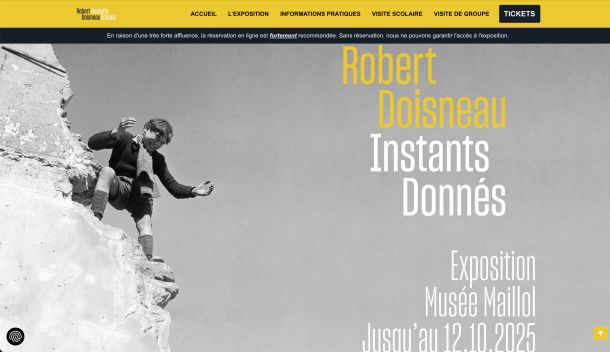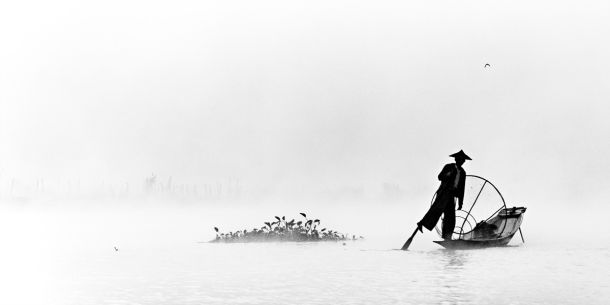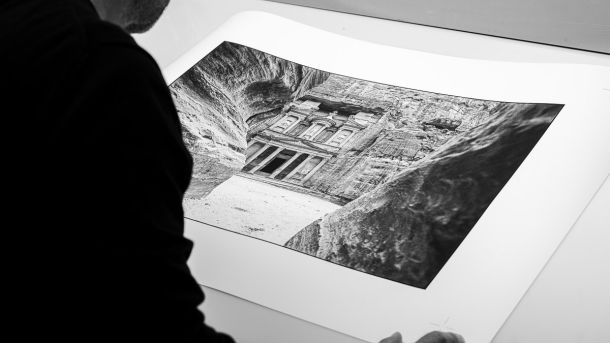The Art of Photographic Contemplation for Wellbeing

Dawn in Paros – Photo : © Pierre Chancy
Do you sometimes feel overwhelmed by stress or anxiety? Discover how contemplating fine art photography calms the mind, reduces anxiety, and fosters personal growth. By exploring its emotional and relaxing effects, this article reveals the benefits of this accessible artistic practice to restore serenity and stimulate creativity.
Table of Contents
- The Impact of Artistic Contemplation on Wellbeing
- Specific Benefits of Fine Art Photography
- Incorporating Artistic Contemplation into Daily Life
The Impact of Artistic Contemplation on Wellbeing
The General Benefits of Art on Relaxation
Scientific research shows that art improves both mental and physical wellbeing. Studies indicate that artistic contemplation reduces stress and promotes relaxation. Artistic activities are effective in addressing anxiety and sleep disorders. A WHO Europe review based on 900 publications confirms that art enhances wellbeing at all ages. Viewing art stimulates creativity and emotional calm. Studies, including the one led by WHO Europe, emphasize that art improves mental and physical wellbeing for people of all ages [1].
The Brain Mechanisms Behind Artistic Contemplation
Looking at artwork activates specific areas of the brain. Observing fine art photography stimulates the visual cortex and amygdala—areas responsible for processing emotions and memories. Colors, shapes, and perspectives trigger beneficial neurochemical reactions. MRI studies reveal that art positively alters brain activity, promoting both mental and physical relaxation. Art movements shape our emotional perception of art, directly influencing its benefits for wellbeing.
| Specific Benefit | Impact on Mental Wellbeing | Impact on Physical Wellbeing |
|---|---|---|
| Stress reduction | Decreases cortisol (stress hormone) levels | Lowers stress-induced blood pressure |
| Emotional expression | Facilitates the expression of feelings | Releases physical tension linked to emotions |
| Relaxation and calm | Improves overall sense of wellbeing | Boosts immune system due to enhanced global wellbeing |
| Anxiety management | Reduces anxiety symptoms | Lessens physical signs of anxiety (tremors, palpitations) |
| Cognitive stimulation | Enhances focus and observation | Stimulates cognitive functions that support physical health |
| Creativity development | Stimulates imagination and divergent thinking | Improves mental flexibility |
| Improved mood | Stimulates dopamine (pleasure hormone) release | Positive physiological effects from dopamine secretion |
Testimonies highlight the soothing effects of artistic contemplation. People report a better daily experience thanks to this practice. Contemplating art helps express emotions that are hard to verbalize. Studies reveal that it reduces anxiety, improves sleep, and strengthens the connection with others and the environment.
Specific Benefits of Fine Art Photography
Contemplation as a Tool for Personal Growth
Contemplating fine art photographs stimulates emotional expression and problem solving. It fosters self-reflection and personal development. Minimalist photography embodies the power of simplicity to encourage introspection and calm. Visual art enhances overall wellbeing and gives meaning to life.
In front of a fine art photo, the viewer begins an inner dialogue—examining their emotions and personal experiences. This process stimulates introspection and reflection on one’s existence. Contemplation becomes a mirror of the soul, revealing unconscious aspects and promoting self-understanding—an essential part of personal growth.
Transformation of Self-Perception
Photographic contemplation positively transforms self-perception. It improves self-appreciation and body image. Regular practice builds confidence and acceptance of personal changes. It fosters a kinder relationship with one’s appearance and life journey.
Many individuals report improved wellbeing after regular practice. They describe greater self-awareness and personal fulfillment, as well as renewed creativity and sensitivity to the beauty of everyday life.
Incorporating Artistic Contemplation into Daily Life
To integrate art into your routine, schedule 10 to 15 minutes each day. Start with a photograph that speaks to you. Place it somewhere visible. Take time to observe the details. This regular practice enhances mental serenity and stimulates creativity.
Several techniques combine meditation with fine art photography. Guided contemplation focuses on a single image with controlled breathing. Free association links emotions to elements in the image. Mindfulness combines observation with grounding in the present. Platforms now offer sessions using artworks—such as online meditations from the Musée d’Art Moderne de Paris.
| Technique | Principle | Effects |
|---|---|---|
| Guided contemplation | Observing an artwork with audio guidance | Stress reduction, reduced anxiety |
| Mindfulness | Conscious breathing and image observation | Improved focus, mental calm |
| Free association | Linking emotions to visual elements | Emotional release, facilitated introspection |
| Visual meditation | Contemplating artworks via virtual exhibitions | Stimulates imagination, physical relaxation |
To deepen your practice, refer to “Meditating with Art” by Pauline Clerget. Explore virtual museum exhibitions. Download apps like Calm. To make art part of your daily life, acquiring a fine art print suited to your taste is an excellent first step.
Contemplating a fine art photograph stimulates the brain, calms the mind, and supports personal growth by reducing stress and boosting creativity. Incorporate this practice through museum visits or guided meditation to enhance wellbeing. Just a few minutes each day can open the door to lasting mental serenity and deeper self-connection.
FAQ
How do I choose a fine art photograph?
Choosing a fine art photo involves familiarizing yourself with different styles by visiting galleries, museums, and exhibitions. Consider the artist’s unique perspective, which defines the image as a work of art.
Framing also plays a key role in enhancing the image. Go for minimalist frames for contemporary or minimalist works.
How much time should I spend on this practice?
To feel its calming effects, dedicate 10 to 15 minutes a day to artistic contemplation. This short time allows real relaxation without overwhelming your schedule. Consistency is more important than duration—better 10 minutes daily than an hour weekly.
What are the first effects I might notice?
Initial effects usually appear after a few sessions. You may feel reduced stress and a better mood. With regular practice, benefits deepen: better focus, increased creativity, and stronger emotional balance.
Is this practice suitable for everyone?
Artistic contemplation is suitable for most people, regardless of age. It requires no special skills and easily adapts to individual routines. It’s a gentle and accessible practice that complements other wellbeing activities.
How do I create a space conducive to contemplation?
Choose a quiet place with good natural light if possible. Position your photograph at eye level and eliminate distractions. A peaceful environment supports focus and maximizes the benefits of your practice.



